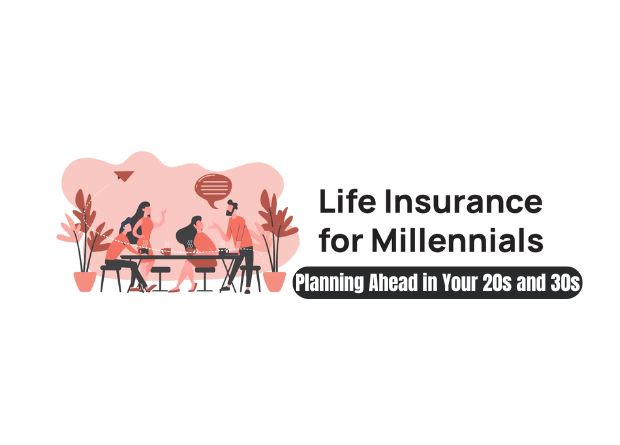Life insurance might not be the first thing that comes to mind when you’re just starting out in adulthood. Between paying off student loans, building a career, and maybe starting a family, millennials (those born between 1981 and 1996) have a lot on their plates. But planning for the future—including the unexpected—is a critical part of financial wellness.
In this article, we’ll break down why life insurance matters for millennials, what options are available, and how to choose the right plan for your stage of life.
Why Life Insurance Matters in Your 20s and 30s
It’s a common misconception that life insurance is only for older adults or people with dependents. In reality, your 20s and 30s are an ideal time to get coverage. Here’s why:
1. Lower Premiums
The younger and healthier you are, the cheaper your life insurance premiums will be. Locking in a policy in your 20s or early 30s can save you hundreds—or even thousands—over the long term.
2. Protect Loved Ones
Even if you don’t have kids, you might have family members who rely on you financially or emotionally. Life insurance can help cover funeral costs, debts, or support for aging parents.
3. Student Loans and Other Debts
If you have co-signed student loans or shared debt with a partner, life insurance can prevent your loved ones from being burdened with your unpaid bills if something happens to you.
4. Future-Proofing
Getting coverage early protects your insurability. If your health changes in the future, you might not qualify for affordable policies—or for any coverage at all.
Types of Life Insurance for Millennials
There are two main types of life insurance to consider:
1. Term Life Insurance
-
Covers you for a set term, usually 10, 20, or 30 years.
-
Much more affordable than whole life.
-
Great option if you want to cover specific financial responsibilities (e.g., until kids are grown or mortgage is paid).
👉 Example: A healthy 30-year-old can get a $500,000, 20-year term policy for as little as $20–30/month.
2. Whole Life Insurance (Permanent Insurance)
-
Covers you for life, with premiums that remain fixed.
-
Includes a cash value component that grows over time.
-
More expensive than term life but can be used as an investment vehicle.
👉 Good option if you want lifelong coverage and the ability to borrow against your policy later in life.
For a side-by-side comparison, check out Policygenius’ life insurance guide.
How Much Life Insurance Do You Need?
A common rule of thumb is to get coverage that’s 10–15 times your annual income. But it depends on your goals. Ask yourself:
-
Do I want to cover my student loans or mortgage?
-
Do I have dependents or plan to start a family soon?
-
What will a funeral or medical expenses cost?
-
Do I want to leave behind money for a partner, child, or sibling?
You can use online calculators like the Life Happens Needs Calculator to estimate your ideal coverage.
Common Life Insurance Myths Among Millennials
❌ “I’m too young to need life insurance.”
Reality: Accidents and illnesses can happen at any age. It’s better to be over-prepared than under-protected.
❌ “It’s too expensive.”
Reality: Term life insurance is surprisingly affordable, especially when you buy young. Premiums rise with age and health issues.
❌ “I don’t have kids or a mortgage.”
Reality: Even if you’re single, life insurance can cover debts, funeral costs, or help support aging parents or co-signers.
❌ “My employer offers enough coverage.”
Reality: Group coverage is usually limited (1–2x salary), may not be portable, and may disappear if you change jobs. It’s smart to supplement with a personal policy.
Steps to Get Started
✅ 1. Determine Your Needs
Use calculators to estimate how much coverage is right for your situation. Factor in debts, income replacement, future expenses, and final costs.
✅ 2. Compare Quotes
Use platforms like Ladder Life, Haven Life, or Fabric by Gerber Life to get instant quotes tailored for young adults.
✅ 3. Choose a Term Length
If you’re planning to have kids or buy a home, a 20- or 30-year policy gives peace of mind during your peak earning and responsibility years.
✅ 4. Complete the Application
Be ready to provide basic health information. Some insurers require a medical exam, while others offer no-exam policies depending on your age and health status.
✅ 5. Review Annually
Life changes fast in your 20s and 30s—marriage, children, promotions. Reassess your needs and update your policy as necessary.
Real Stories: Why Millennials Are Buying Life Insurance
👩 Nia, 29 – Nairobi, Kenya
Nia got life insurance after launching her freelance design business. She didn’t want her aging parents burdened with funeral costs or unpaid business loans if something happened to her.
👨 Dylan, 33 – Johannesburg, South Africa
Dylan and his wife just welcomed their first child. They chose a 30-year term policy to ensure their child’s education and home would be protected no matter what.
Also Check:
- Understanding natural disaster insurance: Are You Covered?
- Cyber Insurance: Protecting Your Digital Assets in the Modern Age
- Pet Insurance Demystified: Is It Worth the Investment?
- Navigating Insurance for Freelancers: Essential Coverage Tips
Useful External Resources
Final Thoughts
Life insurance isn’t just for people with kids or a mortgage—it’s a safety net that ensures your loved ones won’t face financial hardship in the worst-case scenario. For millennials, getting insured now is a smart, forward-thinking move that protects your growing responsibilities and assets.
It’s not just about dying—it’s about living with peace of mind, knowing that if life throws a curveball, your plan is already in place.
